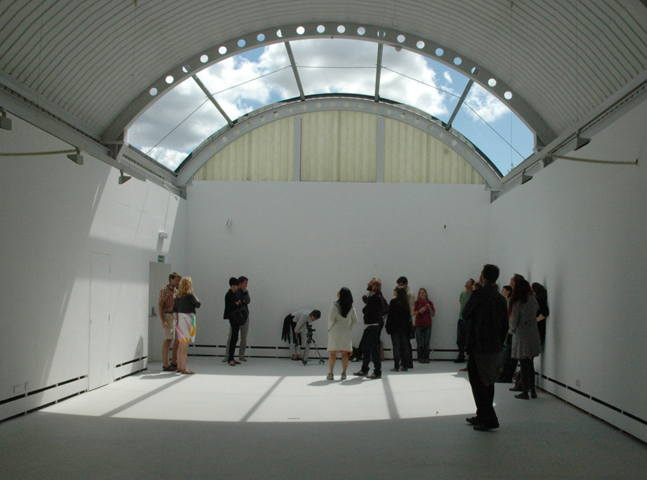
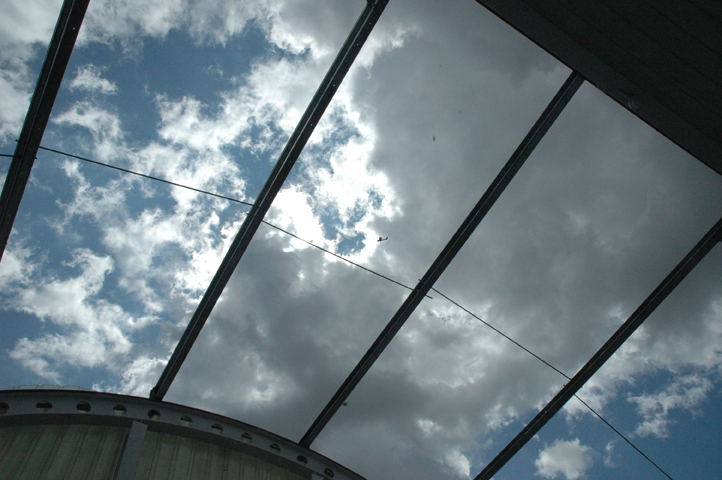
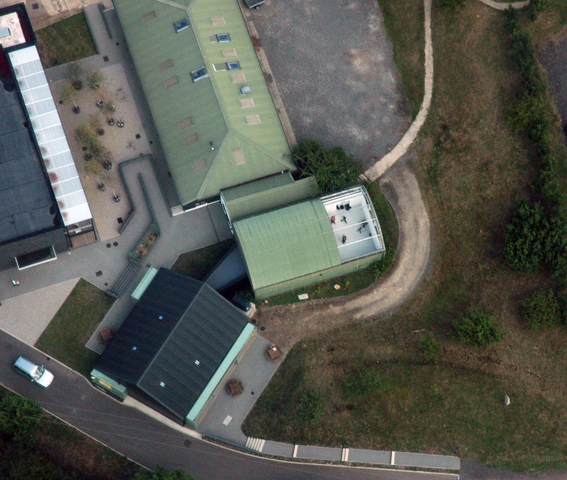
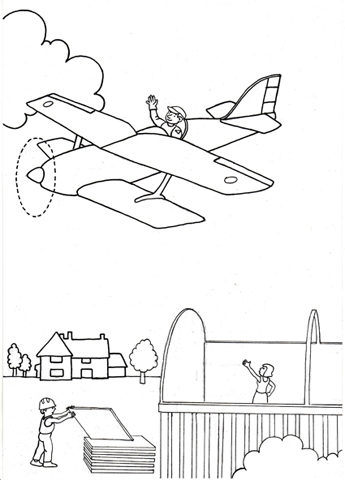

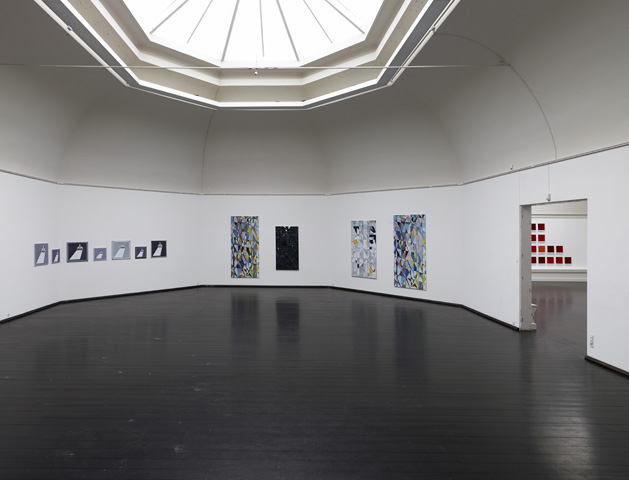
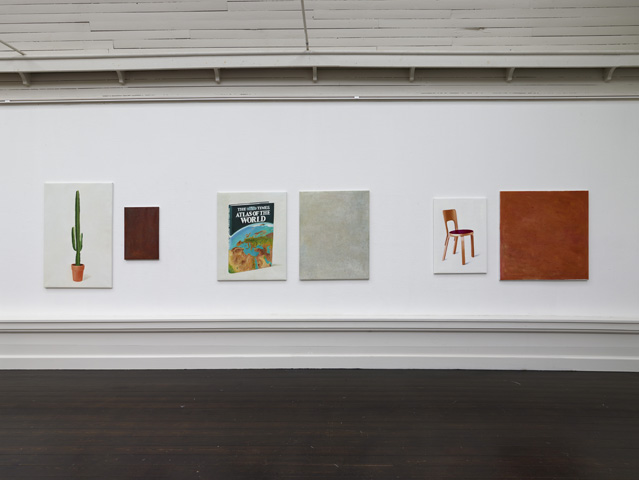







A Kassen is a four-member art collective based in Copenhagen: Christian Bretton-Meyer (b. 1976), Morten Steen Hebsgaard (b. 1977), Søren Petersen (b. 1977) and Tommy Petersen (b. 1975). Their ten-year long practice of site specific work spans performative installation, photography, sculpture and architectural intervention. Through singular combinations of such media and action, they explore the conditions of perception and interpretation as controlled by context and social conventions. The group's work commonly offers elegant conceptual commentary on gallery and museum spaces and on the basic components of the art world: presenting artists, collections and collectors, funding, openings etc.
Recent exhibitions include Reykjavik Arts Festival, Kling & Bang Gallery, Reykjavik; Facetime, On Stellar Rays, New York City; THE TITLE IS A PILE OF LETTERS, IMO Projects, Copenhagen; La Vie Mode d'Emploi, Meessen De Clercq, Brussels, and Window to the World, Museo de Arte Contemporáneo de Castilla y León. A Kassen are the recipients of the Carnegie Award 2014 (third place), and have exhibited a solo show at the New Galerie, New York among others.
A Kassen's Tommy Petersen stayed at the JCVA during February and March 2014 for 12 action-full days that included meetings with many artists and curators, lectures, the premier showing of David Perlov's documentary Footsteps in Jerusalem, and Petersen's own lecture which took place at 19 Hayarkon st. the culture hub of Hamidrasha art school, Beit Berl. Perlov's film, which depicts Jerusalem in the 1960s, served as an excellent starting point for Petersen's extensive tours of the capital and meetings with leading figures in its lively art scene, such as Lea Mauas and Diego Rotman, (SALA-MANCA group and creators of Mamuta), Avi Sabah, (one the founders of the Barbur Gallery), and more.
In Tel Aviv, Petersen met distinguished art notables such as curator Yona Fisher, as well as artists like Meir Tati and Avishai Platek. JCVA art director Nirith Nelson took him to some of the city's most prominent galleries, and JCVA staff member Liya Kohavi led him on an architectural tour of the White City with its Bauhaus and other eclectic buildings.
Two other A Kassen members, Morten Steen Hebsgaard and Christian Bretton-Meyer, joined Petersen for a few days, and together they toured Jerusalem's Old City and Mount of Olives, and then traveled south through the Judean Desert to the Dead Sea.
Petersen's stay at the JCVA was a collaboration between the Danish Agency for Culture and the JCVA.
After his return to Denmark and as a result of his impression and engagement with what he did and saw residency, Petersen organized a gallery show of The Perlov Diaries to a local interested audience.
Wysing Arts Centre, Cambridge, 2009
In Minus Roof, A Kassen temporarily removed a third of the Wysing Arts Centre gallery roof, and then invited gallery guests – many of them local to the agricultural region of Cambridgeshire where the gallery is located – to fly over the gallery in a light plane and observe the region (and the gallery) from above. Both views were filmed on video, and then displayed on a double-channel video screen showing the blue sky and slowly-shifting clouds through the roof's metal framework next to the fast-moving earth as seen from the light plane.
This manipulation of the physical gallery as well as of the mobilization of gallery guests expands the boundaries of art from that which is within the gallery to that which can shape the gallery. Through this large-scale, minimalist intervention, the artists enlarged the gallery's physical boundaries; meanwhile, the additional, grandiose gesture of flying the spectators (an activity associated with luxury and leisure) offered another, symbolic, dimension to what art viewing can be.
The performative element of the piece fully involves viewers, whose movement on the ground and in the air is necessary for the actualization of the work. This intervention asks us to consider physical and symbolic distance as critical elements for understanding art works. It was the outcome of A Kassen's participation in a residency program at Wysing, wherein they discovered that members of the local community (Bourn, Cambridgeshire) are neither familiar with the small, local airport which was built during World War II, nor with the gallery. A Kassen found a delightful way to introduce them to both.
A Kassen Carnegie Award 2014
Den Frie Center for Contemporary Art, Copenhagen, Denmark. Jan-Feb 2014
A Kassen Carnegie Award was a colossal show created by A Kassen as a last-minute replacement for the grand Scandinavian Carnegie Art Awardshow. The exhibition was meant to arrive in Copenhagen on January, 2014, after its initial presentation at the Royal Swedish Academy of Arts in Stockholm in November 2013. The Swedish award, one of the largest art awards worldwide with prizes amounting to about $300,000, was established in 1998 by Carnegie Investment Bank to promote contemporary Nordic painting.
In 2013, A Kassen won the award's third prize (~$60,000), and was part of the Stockholm prize exhibition with sixteen other artists. After Carnegie cancelled the exhibition's expected tour through Nordic capitals due to financial considerations, the Danish Center for Contemporary Art invited A Kassen to offer a solo exhibition of the same magnitude at the time initially slotted for the award's traveling exhibition.
A Kassen took this opportunity not solely to present their works, but proceeded to make a complete copy of the entire award exhibition as it was originally shown in Stockholm, though without any involvement of their fellow artists. Instead, A Kassen sent digital photographs of the 150 works made by the 17 prize winners to a Chinese village that specializes in painting reproductions. Painters in the village were asked to use photos of installations, video works or digital creations they received to make oil paintings on canvas, and make them fast.
These paintings were then sent back to Copenhagen from China, and were shown at the art center under the title A Kassen Carnegie Art Award, an almost identical title whose meaning is left up to the viewer: is it A Kassen's version of the Carnegie Art Award, or is it the A Kassen Carnegie award, an award of an entirely different order?
A Kassen used the global economic system to both bypass the local art economy, and comment on it. Their success was twofold: they made the West's overall day-to-day reliance on China's economy immediate and palpable, and simultaneously raised questions regarding the production and consumption of art in our times.
The group refused to address the quality of reproduction, and focused instead on its economic apparatus. Here, it is not a single object that is reproduced, but the work of 17 artists, along with that of curators and the documentation produced for the exhibition. This conceptual gesture makes aesthetics, objects, details and individuality secondary at best, foregrounding the process and meaning of globalized production and reproduction.
In A Kassen's Carnegie Award, it is not only the singular art object that loses its authenticity and aura, but the entire exhibition and the system that produces such exhibitions. The collective's Carnegie Award, after all, was made to order to fill gallery space that was left vacant during a hole in its scheduled itinerary. The ritual's defining preconditions -- gallery, opening, artists, art works and spectators – were all in place; an innocent observer might not have discerned the difference between this exhibition and any other. Only the humor of two-dimensional paintings that attempt to recapitulate installations or sculpture hints at the absurdity of the entire exhibition. The collective's approach diverts attention away from the specific works hung on the gallery walls to the ritual's various participants: artists, art-world figures, art consumers and financial backers.
A Kassen are here both participating artists and producers/curators of the entire award show. But the show they have produced is not what it claims to be, not least because works described as those of artists from various Nordic countries were in fact produced by Chinese painters. And this consciously false claim lays a palpable shadow over the claims and standing of other exhibitions and art events in our time and over the question of the author in contemporary views.